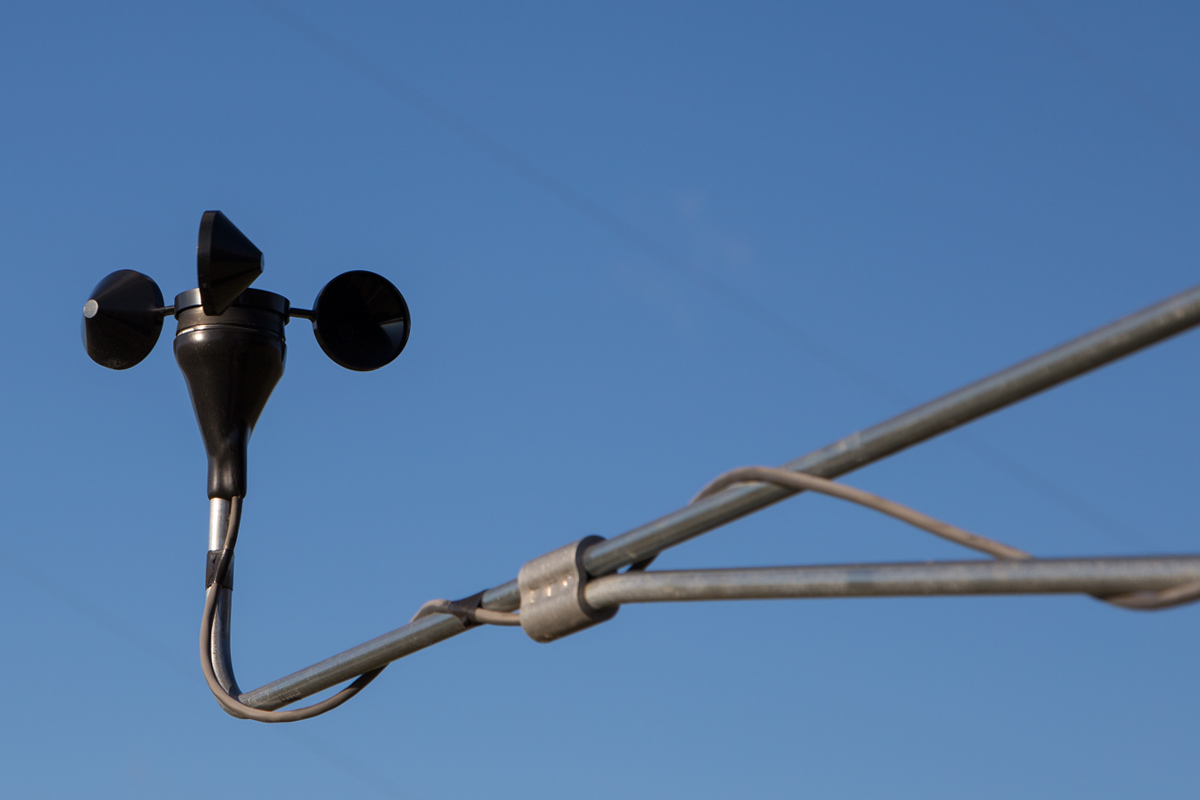How an Anemometer Can Improve Your Weather Tracking System
How an Anemometer Can Improve Your Weather Tracking System
Blog Article
Discovering the Features and Benefits of Anemometers for Weather Condition Lovers and Professionals
Anemometers stand as instrumental devices in the realm of climate surveillance, satisfying both fanatics and skilled experts alike. These devices offer a home window into the dynamic globe of wind patterns and rates, supplying vital data for meteorological analysis and projecting. From mug anemometers to sonic anemometers, each type brings its distinct set of advantages and applications, dropping light on different elements of climatic conditions. As we look into the features and benefits of anemometers, a much deeper understanding arises not just of prevailing climate phenomena however also of the broader effects for fields like wind energy production and environmental research.
Value of Anemometers in Weather Surveillance
Anemometers play a crucial duty in weather condition monitoring by supplying precise dimensions of wind rate, helping in forecasting and understanding weather condition patterns. These instruments, ranging from typical cup anemometers to contemporary ultrasonic anemometers, are necessary for meteorologists, researchers, and weather condition lovers alike.

Sorts Of Anemometers and Their Applications
The most common kinds of anemometers include cup anemometers, vane anemometers, hot-wire anemometers, and ultrasonic anemometers. Mug anemometers consist of 3 or 4 cups placed on horizontal arms that revolve with the wind, measuring its speed. Vane anemometers, on the other hand, utilize an openly turning vane to line up with the wind direction, supplying both wind rate and direction dimensions.
Each sort of anemometer has its distinct advantages and applications. Cup anemometers are durable and appropriate for general weather condition tracking, while vane anemometers are preferred for directional dimensions. Hot-wire anemometers are delicate to low air velocities, making them ideal for indoor atmospheres. Ultrasonic anemometers are non-intrusive and provide high precision, typically used in study and specialized weather condition tracking applications. Understanding the attributes and applications of each sort of anemometer is essential for selecting one of the most suitable instrument for details weather condition checking demands.
Benefits of Making Use Of Anemometers in Forecasting
In weather forecasting, the usage of anemometers offers indispensable advantages for boosting the accuracy of weather projecting. Anemometers measure wind speed and instructions, offering important data for predicting weather condition patterns. By integrating wind data into projecting designs, meteorologists can much better understand the movement of weather systems, anticipate changes in weather, and issue much more accurate projections.
Additionally, anemometers play a crucial role in assessing prospective weather condition hazards. Checking wind rates assists forecasters anticipate extreme weather events such as hurricanes, twisters, and winter storms with higher accuracy. This early warning system allows authorities to issue prompt signals and carry out needed precaution, decreasing the dangers to life and property.
In addition, anemometers assist in enhancing renewable resource production. By examining wind patterns, meteorologists can recognize suitable locations for wind ranches and predict energy output, adding to the reliable generation of wind power.

Anemometers in Wind Power Production
Provided the critical role anemometers play in offering exact wind data for weather projecting and threat evaluation, link their relevance encompasses the realm of wind energy production. Anemometers are essential instruments in the area of wind energy, where the dimension of wind speed and direction is important for establishing the feasibility and efficiency of wind turbine setups. By properly gauging wind rates at differing heights, anemometers aid optimize the positioning and layout of wind generators to maximize power result.
In wind ranches, anemometers find out this here are tactically placed to gather real-time wind data that is used to analyze the prospective power production of a website. This information contributes in establishing the economic stability of wind power tasks and in projecting power generation to make certain grid stability. Additionally, anemometers help in keeping an eye on wind conditions to maximize generator performance, prevent damages from high winds, and make certain the security of employees operating in the location of wind generators.
Enhancing Climate Comprehending With Anemometers

Anemometers play a crucial function in improving our understanding of microclimates. These localized weather can vary dramatically from broader regional projections, making it necessary to have exact data for details areas. anemometer. By purposefully putting anemometers in various places, scientists can gather thorough details on just how wind acts in different surfaces, metropolitan atmospheres, or bodies of water
Additionally, anemometers add to enhancing climate forecasting designs by offering real-time data on wind behavior. This information is particularly important for anticipating serious climate events, enhancing agricultural techniques, and sustaining sectors like aeronautics and maritime navigation. On the whole, anemometers are vital instruments that allow us to dig much deeper into the complexities of climate systems, eventually bring about even more precise predictions and better-informed decisions.
Conclusion
In final thought, anemometers play a critical function in weather surveillance and projecting by gauging wind speed and direction. They are essential tools utilized by weather enthusiasts and experts to collect accurate data for predicting weather patterns and examining prospective impacts. Anemometers also have applications in wind power manufacturing, additional highlighting their relevance in both weather forecasting and sustainable energy industries. Overall, anemometers add to improving our understanding of climate phenomena and boosting forecasting capacities. anemometer.
From mug anemometers to sonic anemometers, each kind brings its special set of advantages and applications, dropping light on various facets of atmospheric problems. These tools, varying from standard cup anemometers to modern-day ultrasonic anemometers, are necessary for meteorologists, researchers, and climate enthusiasts alike. The most usual types of anemometers consist of mug anemometers, vane anemometers, hot-wire anemometers, and ultrasonic anemometers. Mug anemometers are durable and look at this website ideal for basic climate monitoring, while vane anemometers are favored for directional measurements. Anemometers are essential tools in the area of wind energy, where the measurement of wind speed and instructions is crucial for determining the expediency and performance of wind turbine installments.
Report this page